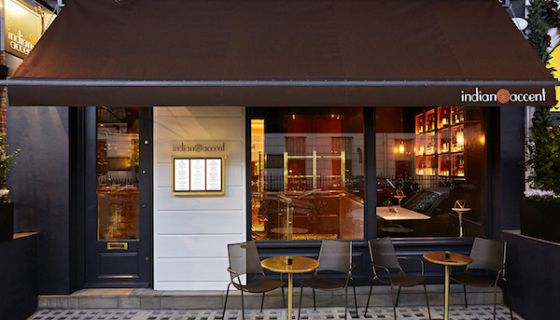It now takes the fingers of both hands to count up the number of smart Indian restaurants that occupy significant sites across London’s West End.
There is the grandfather of them all, Veeraswamy, on Swallow Street; the Gaylord on Mortimer Street; the Red Fort on Dean Street; Benares on Berkeley Square; Chutney Mary on St James’s Street; Quilon on Buckingham Gate; Gymkhana on Albemarle Street, sister to Trishna in Marylebone.
Then there are two newcomers: Indian Accent, further up Albemarle Street, and Jamavar that opened a year ago on Mount Street. Only slightly less smart perhaps, but with a daily queue outside it, is the branch of Dishoom on St Martin’s Lane.
There seem to be three reasons for all these openings. The first is the growing number of those from the Indian subcontinent who have either made London their home or who have a second home here. A quick look at the customers enjoying any one of these restaurants confirms this.
The second, on top of the long historical associations between the UK and India, is the increasing penchant of those living in the UK for spice in their food, a particular attraction of Indian cooking. And this essential ingredient is an added attraction for any visitor to London. My list of recommendations for overseas visitors invariably includes a visit to one of these restaurants for a style of cooking that is not widely available in their own country.
Finally, there is the strong association between India and the UK with alcohol, gin in particular, which together with an exotic mix of botanicals gives the bartender, an essential figure in any restaurant opening today, a starring role.
It is a mixture of these factors that led Indian businessman and restaurateur, Dinesh Nair, to replicate Jamavar’s initial success in India. He originally opened the site as a French bistro, 8 Mount Street, in October 2015 but a lack of customers persuaded him to change everything to open Jamavar in December 2016.
So far so good. Jamavar has gained a Michelin star already, having secured the talents of Rohit Ghai, who won the same accolade while at Trishna and Gymkhana. But, as though to prove his own worth, Ghai has now moved on to pastures new (either to a big site in London or back to India, according to the rumour mill) and his place will be taken by Surender Mohan, being flown in from India. On the basis of what we ate at Jamavar in early January, his arrival cannot come too soon.
There was nothing absolutely drastically bad except that almost everything, and this included an extremely weak William of Orange cocktail (Martin Miller gin, lemon and orange zest and orange bitters), lacked the adroit spicing that makes an evening in an Indian restaurant so compelling and would have justified my bill of £180 for two.
We began with two dishes from their list of sharing plates. The lobster dish, although as artfully served as everything we tried, was topped with coarse chilli while the kid goat kebab was accompanied by a comforting bone-marrow sauce. We then went our separate ways, my wife ordering a very generous soft-shell crab, gently coated in Tellicherry pepper, while I ordered a Tulsi chicken tikka, a macher jhol, rice and their bread basket (£8).
The last three were all disappointing. The chicken tikka was four slices of chicken breast, served on a wooden platter, but without any of the oomph or heat that I had expected. The macher johl (£20) was a fillet of sea bass served in a curry made from aubergine, potato and chill that was dull.
What was missing was the range of spicing that we had specifically come for. Chilli, more or less and sometimes too much, seemed to be the only spice in the kitchen. Perhaps we were hoping for too much but deep down we were looking for dishes that would zing with those flavours that would take us back to our trips to India.
Much more exciting spicing is to be found in the recently opened Indian Accent, an outpost of the Delhi original which has already also opened in New York.
The New York influence can be seen in the clean, rather anonymous interior but far more obviously in the complex style and presentation of the food. Each of the dishes comes meticulously plated and there is much less emphasis here on rice as a filling and separate accompaniment. The breads, including a kulcha, a form of naan with a wide choice of stuffings including smoked bacon and black pudding, are excellent and there are plenty of vegetarian choices throughout the menu.
The menu is slightly off-putting in that its typeface is small, only lower-case lettering has been used and it includes a pretty bewildering tally of Indian terms and ingredients. The poor legibility is compounded by low lighting. But the staff, a mixture of Indian and European, are well-briefed and the wine list is excellent, particularly what it offers by the glass.
From a blue cheese naan as an amuse-bouche to a sizzling dish of thin slices of beef on a base of millet to a main course of ghee roast lamb served with four different chutneys and roti pancakes (eaten in the style of a Peking duck), this kitchen seems to have got its spicing spot on.
Not quite India perhaps – but certainly close enough.
Jamavar 8 Mount Street, London, W1K 3NF; tel +44 (0)20 7499 1800
Indian Accent 16 Albemarle Street, London W1S 4HW; tel +44 (0)20 7629 9802













